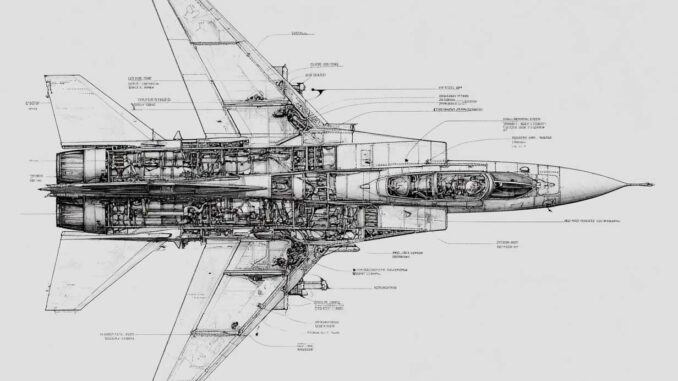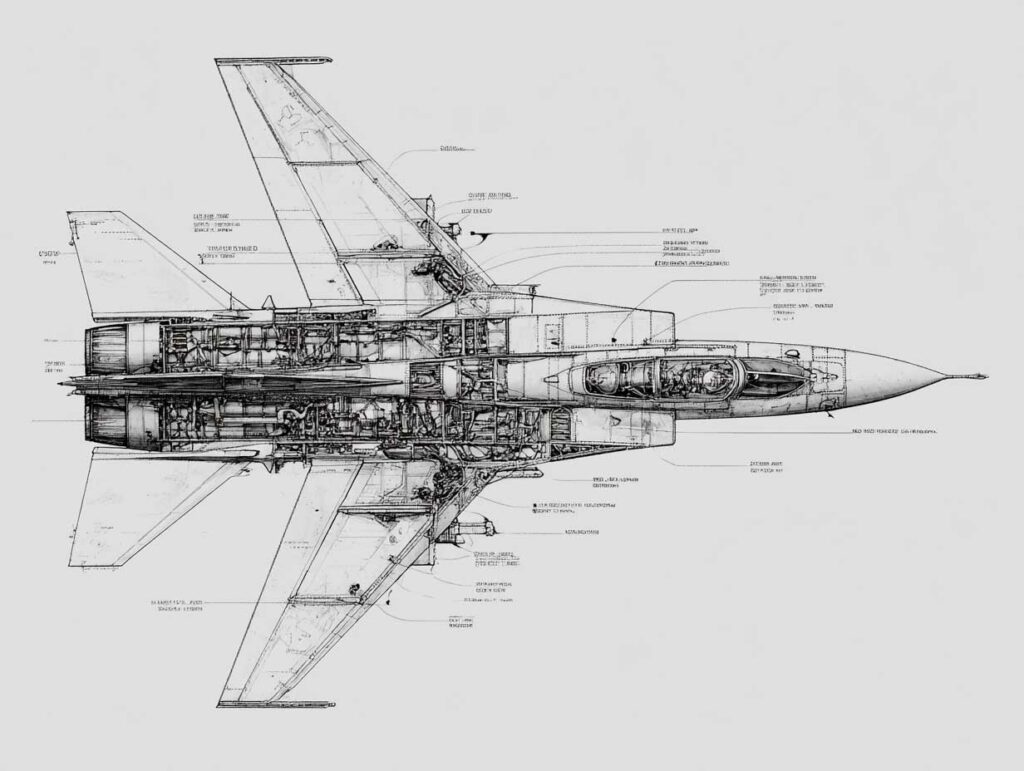
China is preparing a twin-engine, two-seat carrier-based training jet, inspired by the T-7A, to strengthen the PLAN’s naval aviation.
A project intended for naval training
China is continuing to strengthen its carrier-based aviation with the development of a new jet trainer for aircraft carriers. A prototype recently spotted at the facilities of manufacturer Hongdu Aviation Industry Group in Nanchang appears to confirm the existence of an advanced program. The aircraft, the first images of which have been circulating since early August 2025, is partly inspired by the American T-7A Red Hawk, while incorporating structural modifications adapted to the requirements of carrier-based aviation.
This future aircraft aims to fill a significant gap in the Chinese navy’s current capabilities. The training aircraft used to date, such as the JL-9 and L-15, do not have the characteristics required for regular operations from a flight deck. This new project therefore reflects Beijing’s clear desire to acquire an aircraft dedicated to training naval fighter pilots that is compatible with the specific constraints of aircraft carriers.
A derivative design adapted to the naval context
The available photos and patent CN 307977940 S filed in 2023 reveal several key technical features. The jet, officially registered as a “twin-tail aircraft with side air intakes”, has a silhouette similar to Boeing’s T-7A. However, the structural details betray a specifically naval orientation:
- Twin engines housed in two separate nacelles,
- Twin-wheel nose landing gear,
- Integrated arresting hooks,
- Reinforced landing gear,
- Twin canted stabilizers.
These features indicate a design intended for catapult launches, arresting gear landings, and intense cycles on a shipboard flight deck.
The aircraft is also equipped with a tandem two-seat cockpit with a streamlined canopy typical of advanced training aircraft. The overall design suggests a structure optimized for repeated maneuvers, rapid altitude changes, and high mechanical stresses in a marine environment.

A strategy for technological and operational independence
The development of this aircraft by Hongdu is part of a broader strategy by the PLAN (People’s Liberation Army Navy) to strengthen its autonomy in the training of shipboard pilots. Currently, the training of pilots for aircraft carriers relies on aircraft such as the JL-9, which require adaptations and cannot operate fully from a ship.
The future jet could enable pilots to be trained in conditions close to real combat, directly from the decks of aircraft carriers such as the Liaoning, Shandong, or Fujian. This would avoid an operational gap between ground training and actual deployment at sea. This gain in efficiency in pilot training would be crucial in supporting the rise of the Chinese navy in the Asia-Pacific region.
It is also a question of reducing Beijing’s dependence on foreign models. Although the resemblance to the T-7A is striking, China is developing a domestic solution that meets its specific needs, incorporating reliability, redundancy, and safety criteria specific to the maritime environment.
Twin engines for safety and endurance
One of the fundamental differences between the Chinese prototype and its American counterpart is the choice of twin engines. The T-7A Red Hawk is powered by a single GE F404 jet engine, which is sufficient for ground training. In contrast, Hongdu’s future jet will be powered by two engines, probably WS-13s or a modified version.
This technological choice is based on two considerations:
- Redundancy in the event of engine failure, which is essential when flying over the sea,
- Increased thrust to ensure safer catapult launches and landing phases.
The twin engines increase the total weight, but they guarantee a high safety margin, which is considered essential for in-flight training. It also allows the aircraft to be used for secondary purposes, such as light attack or advanced tactical training missions, beyond basic training.
A response to the modernization of Chinese aircraft carriers
The timing of this aircraft’s development is not insignificant. China recently launched the Fujian, its most advanced aircraft carrier, equipped with EMALS electromagnetic catapults. These catapults allow heavier aircraft to be launched with greater precision and less mechanical stress than with the ski-jump ramps used until now.
However, the arrival of these new platforms requires compatible aircraft. The Hongdu jet could therefore serve as a flying test bed for new onboard procedures. It would also be a stepping stone towards qualifying pilots for the J-15, J-35 and future fifth-generation carrier-based fighters.
Limited but significant export implications
Although the main purpose of this aircraft is to meet the internal needs of the PLAN, it could be of interest to countries that are customers of light aircraft carriers or are in the process of acquiring Chinese-made aircraft. Algeria, Pakistan and South American countries could see this aircraft as an affordable alternative to expensive Western models subject to export restrictions.
The future Chinese-made carrier-based training aircraft could thus enhance the appeal of Chinese naval systems by completing a coherent offering ranging from aircraft carriers to fighters, carrier-based drones, and C2 systems.
A technical step to be taken to assess its maturity
The industrial maturity of the program remains to be confirmed. The prototype presented is probably only at the stage of static tests or low-speed taxiing. Flight tests are expected to take place in 2026, with onboard validation possible by 2027-2028 if performance is deemed satisfactory.
There are still many technical challenges to overcome, including the reliability of the landing gear, the resistance of the structures to takeoff and landing cycles, compatibility with electromagnetic catapults, and aerodynamic performance at low speeds. All of these criteria must be validated before the aircraft can be considered for active service.
Nevertheless, this project is a clear indicator of China’s desire to fill the gaps in its naval training aircraft capabilities. It demonstrates a structured approach to military development, focused on complementary and consistent technological building blocks.
Consolidation of China’s naval power
By developing a twin-engine carrier-based training aircraft, China is strengthening a capability that was previously absent from its naval arsenal. This program demonstrates a long-term vision: to train future carrier-based pilots more effectively, adapt equipment to new generations of aircraft carriers, and build a more robust and autonomous naval aviation force.
The integration of this aircraft into the PLAN would mark a key step in the structuring of a carrier strike group capable of operating far from shore and supporting extended operations. This is not just a new aircraft, but a missing piece of a larger strategic puzzle.
War Wings Daily is an independant magazine.